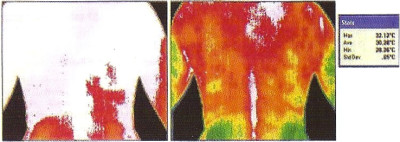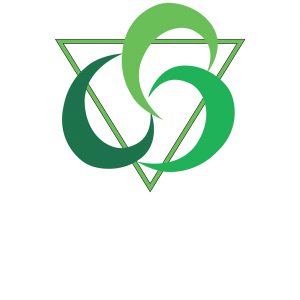A research project by Faye Ferguson entitled “Showing the effects on the body of Bowen Technique using Thermal Imaging” for the Diploma of Specialised Bowen Therapy
“Thermal Thermography is the use of an infrared thermal imaging and measurement camera to ‘see’ and ‘measure’ thermal energy emitted from an object, in this case, a human body.
Thermal, or Infrared energy, is light that is not visible because its wavelength is too long to be detected by the human eye; it’s the part of the electromagnetic spectrum that we perceive as heat. Unlike visible light, in the infrared world, everything with a temperature above absolute zero emits heat. Even very cold objects, like ice cubes, emit infrared radiation. The higher the object’s temperature, the greater the infrared radiation emitted. Infrared allows us to see what our eyes cannot. Infrared Thermography has many applications, including industry, medical, equine, mechanical, and building.
Medical thermal imaging (MII) is becoming a common screening modality in the areas of neuromusculoskeletal injury, cancer, and circulatory pathology. As a physiological imaging modality that assesses body function, it can indicate developing disease states and breast cancer, earlier than anatomical examinations. It is highly accurate and 100% safe, involving no radiation or contact. MII can also help to identify sources of pain, particularly those involving the neuromuscular and circulatory systems. And because every organ reflects itself on the skin surface, organ stress/compromise can be monitored. If disease processes are present, a thermal imager may detect them before symptoms become apparent, enabling early intervention and proactive treatment. There are far reaching health implications in these postulations because they suggest that paraspinal thermography should provide a ‘window’ into the entire sympathetic nervous system.
DITI (digital infrared thermal imaging) is a non-invasive diagnostic test that allows a health practitioner to see and measure changes in skin surface temperature.
The following digital infrared thermal images show what a huge impact the Bowen Technique has on the body. Click the images to make them larger. This subject had one Bowen treatment and five thermal images taken.
Images 1-3. The subject had pain in area of trapezus and T-1 – L-4
The first photo was taken before a treatment where natural body heat is showing in the red patches. Green is cool, red is hot, and white is hotter still. The second photo was taken one hour after a Bowen treatment and it can be clearly seen how the body has responded with more heat, which appears to peak on the fifth day after treatment.
Images 4 and 5
The fifth photo taken on the thirteenth day after treatment is similar to the photo taken one hour after treatment. It is quite obvious why Mr. Bowen says only treat again between 5 and 10 days as the body continues to work for many days and should not be interrupted. ”
By Faye Ferguson (Instructor) Brisbane, Australia
Originally printed in Bowen Hands, December 2011



